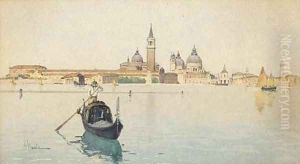Giuseppe Vizotto Alberti Paintings
Giuseppe Antonio Vizotto Alberti was an Italian painter, born in 1720 in Bassano del Grappa, Veneto, Italy. Although not as widely recognized as some of his contemporaries, he made a considerable contribution to the art world during the 18th century, primarily focusing on religious and historical subjects.
Vizotto Alberti received his early art education in his hometown, which during the 18th century was a notable center for painting, thanks in large part to the presence of the Remondini printing house, which specialized in prints and books. His style was influenced by the works of prominent Veneto painters such as Giovanni Battista Tiepolo and Canaletto, as well as the broader currents of the Rococo movement that swept through Europe during his lifetime.
He worked on various church commissions, painting altarpieces and frescoes, which was a common practice for artists of his time. His religious works often featured dramatic use of light and shadow, a technique known as chiaroscuro, to emphasize the spiritual intensity of the subjects. He also had a keen interest in historical and mythological themes, which he explored through his canvases. Vizotto Alberti's paintings were known for their vibrant colors and dynamic compositions, which helped to bring the narratives to life.
Despite his contributions, Vizotto Alberti did not gain the same level of fame as some of his contemporaries. His works were largely confined to the region of his birth, and as a result, his reputation did not spread as widely as other artists who benefited from international patronage. Nevertheless, his paintings can still be found in churches and collections in and around Veneto, serving as a testament to his skill and dedication to his art.
Giuseppe Vizotto Alberti passed away in 1797. His legacy continues to be appreciated by art historians and enthusiasts who have an interest in the art of the Veneto region during the 18th century. His works contribute to the rich tapestry of Italian art history and offer insight into the cultural and artistic developments of his time.
